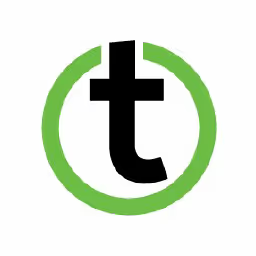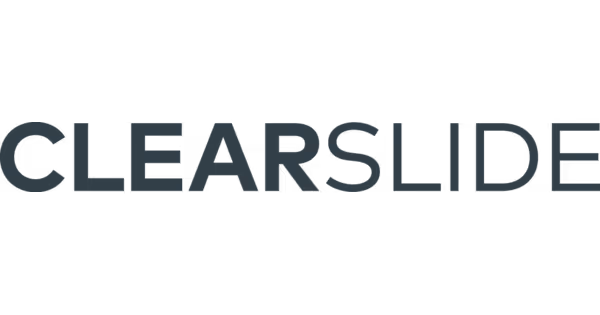Humanlinker Alternatives
A detailed comparison of 10 Humanlinker alternatives. We analyze features and pricing to help you select the right platform.

Humanlinker is a solid tool for personalized B2B outreach. Its AI-driven personalization and behavioral analysis help sales teams craft tailored messages. Many users find it effective for boosting response rates, which might be why you've used it.
But no tool is perfect. Some users find the credit system confusing and wish for more advanced features. To help, we've analyzed the best alternatives based on G2 reviews, comparing their pros and cons against Humanlinker. Let's get started.
Consider 11x for Digital Sales Workers
If your sales strategy includes using digital workers, 11x is a platform worth exploring. It focuses on automating sales tasks through specialized agents, which can complement your existing team's efforts.
For teams looking to delegate repetitive outreach and research, 11x offers a different approach. Consider how autonomous agents could fit into your workflow and support your sales goals.
11x is a GTM platform where AI agents manage the sales process. Our agent Alice finds prospects, handles email and LinkedIn outreach, and maintains CRM data. Julian, another agent, qualifies inbound leads and books appointments. We eliminate the need for separate tools for data enrichment, outreach, and email warmup because the platform unifies these functions.
Humanlinker Alternatives
Below, we examine several Humanlinker alternatives in detail. Each review covers pricing, core features, and how they stack up against Humanlinker in terms of benefits and potential drawbacks.
1) Apollo.io
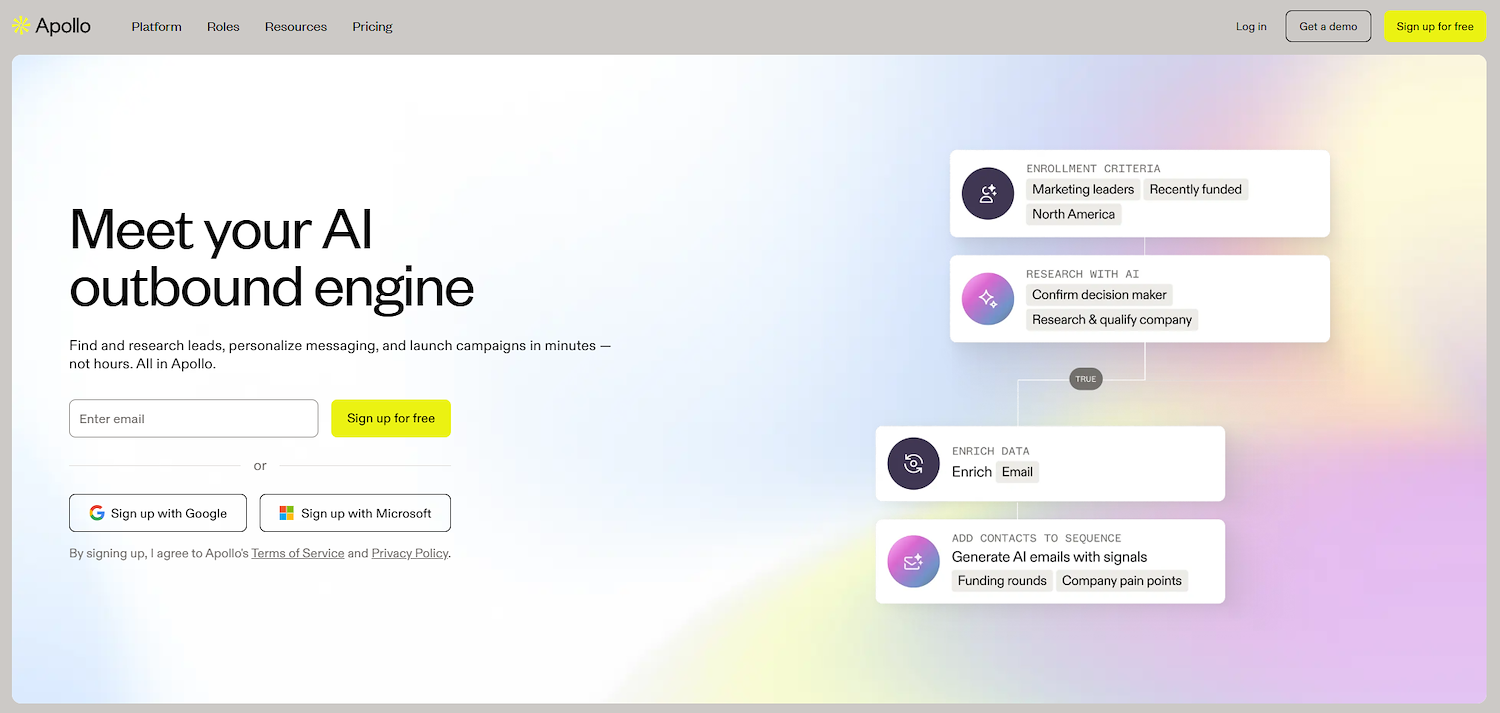
Apollo.io is a go-to-market platform with a database of over 275 million contacts. It unifies data with engagement tools for sales teams. Users can find prospects and execute email outreach campaigns through automated sequences. The platform also provides analytics to measure campaign performance.
Apollo.io's Main Features
- Accesses a database of over 275 million contacts for prospecting.
- Executes email outreach campaigns using automated sequences.
- Provides analytics to track and measure campaign performance.
How Apollo.io Compares to Humanlinker
Average Review score: 4.7/5 stars based on 8,904 G2 reviews.
- Apollo.io provides a free plan for one user, which makes it more accessible for initial testing compared to Humanlinker's credit-based system.
- Its contact database includes over 275 million contacts, offering a significantly larger pool for prospecting than Humanlinker provides.
- The platform unifies a large contact database with sales engagement tools, which can eliminate the need for separate software that teams might use with Humanlinker.
- It includes features like lead scoring and buyer intent data, which help teams prioritize prospects more effectively than the general behavioral analysis in Humanlinker.
Apollo.io's Limitations vs. Humanlinker
- Apollo.io's personalization is less focused on individual behavior. It does not have Humanlinker's AI that analyzes personality traits to help users write tailored messages.
- The platform may not provide the same depth of behavioral analysis as Humanlinker. This can make it harder for teams to create hyper-personalized outreach based on nuanced prospect insights.
- Some users report that due to the massive size of its database, contact data in Apollo.io can sometimes be inaccurate, which might result in higher email bounce rates.
- As an all-in-one solution, its features for AI-driven message writing are not as specialized as those in a dedicated personalization tool like Humanlinker.
Pricing and Cost-Effectiveness
Apollo.io offers a free plan and paid tiers starting at $49 per user per month, providing a lower entry cost than Humanlinker, whose plans start at $75 per month. While their mid-range professional plans are similarly priced, Apollo.io's free option makes it more accessible for initial use.
2) ZoomInfo SalesOS
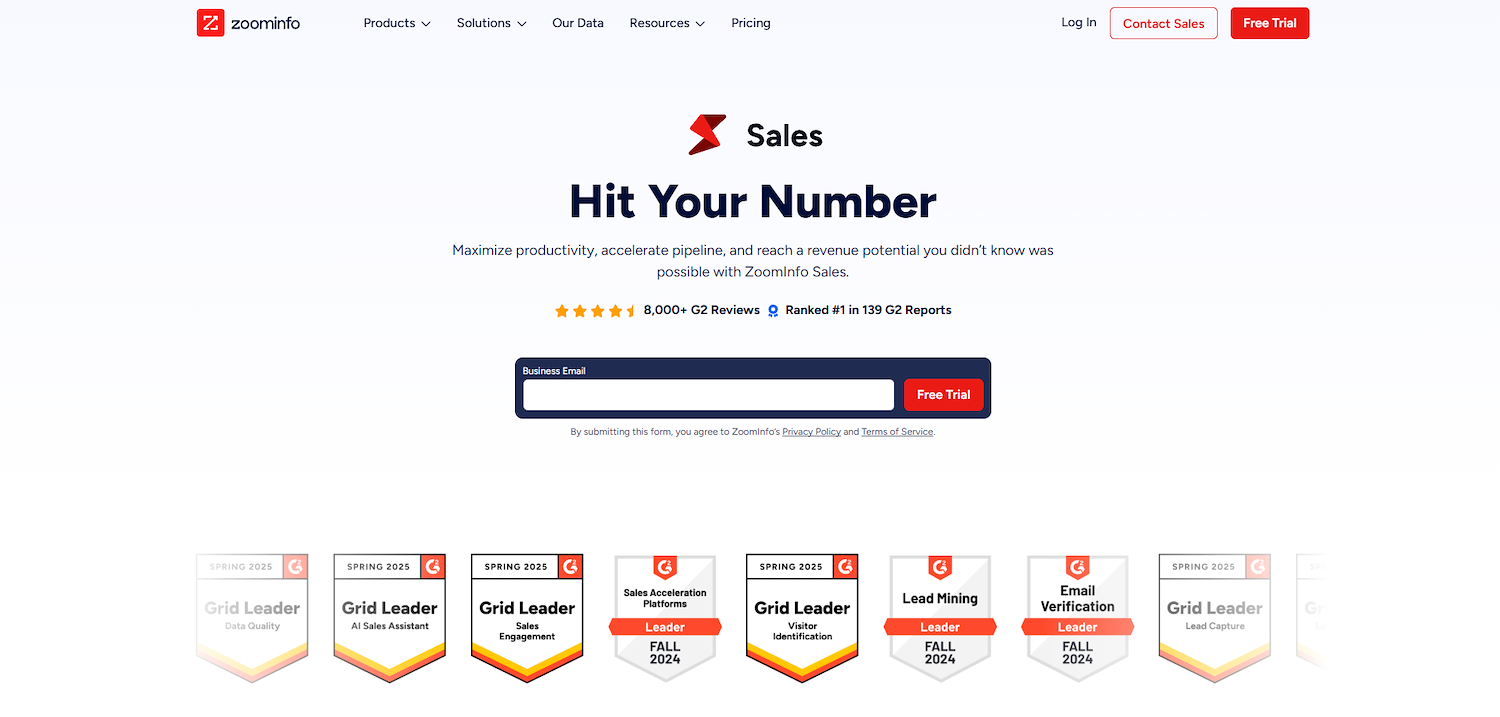
ZoomInfo SalesOS is a go-to-market platform that provides access to a large B2B database. It gives sales teams the data and workflow tools to find and connect with their ideal customers.
The platform helps users build prospect lists and run outreach campaigns. For email outreach, it offers features to engage contacts and track communication directly within the system, which supports a more unified sales process.
ZoomInfo SalesOS's Main Features
- Accesses a large B2B database that helps teams build targeted prospect lists.
- Offers workflow tools to automate and manage sales outreach campaigns.
- Tracks email engagement and communication history directly inside the platform.
How ZoomInfo SalesOS Compares to Humanlinker
Average Review score: 4.5/5 stars based on 8,738 G2 reviews.
- ZoomInfo SalesOS provides a significantly larger and more frequently updated database of contacts and companies, while Humanlinker focuses more on analyzing individual prospects.
- Its AI Copilot offers recommendations on who to contact and when, which differs from Humanlinker’s AI that analyzes personality for message tailoring.
- The platform includes built-in tools for sales engagement and data orchestration, which can replace separate software that teams often use with Humanlinker.
- It offers buyer intent data to identify active buyers, a feature that provides a different strategic advantage compared to Humanlinker's behavioral analysis for outreach.
ZoomInfo SalesOS's Limitations vs. Humanlinker
- ZoomInfo SalesOS does not provide the same AI-powered personality analysis as Humanlinker. This means teams may need to manually research prospects to find the right tone for outreach.
- Its AI Copilot recommends who to contact and when, but it offers less direct support for writing the message itself. Humanlinker, by contrast, generates personalized text suggestions.
- Some users find that as a large, all-in-one platform, its personalization tools are less specialized. Humanlinker's narrow focus on individual analysis can result in more detailed outreach recommendations.
Pricing and Cost-Effectiveness
ZoomInfo SalesOS does not offer public pricing and requires a custom quote, which is common for enterprise-level platforms. For the most accurate pricing information, we recommend visiting the ZoomInfo SalesOS's official website.
3) Lusha
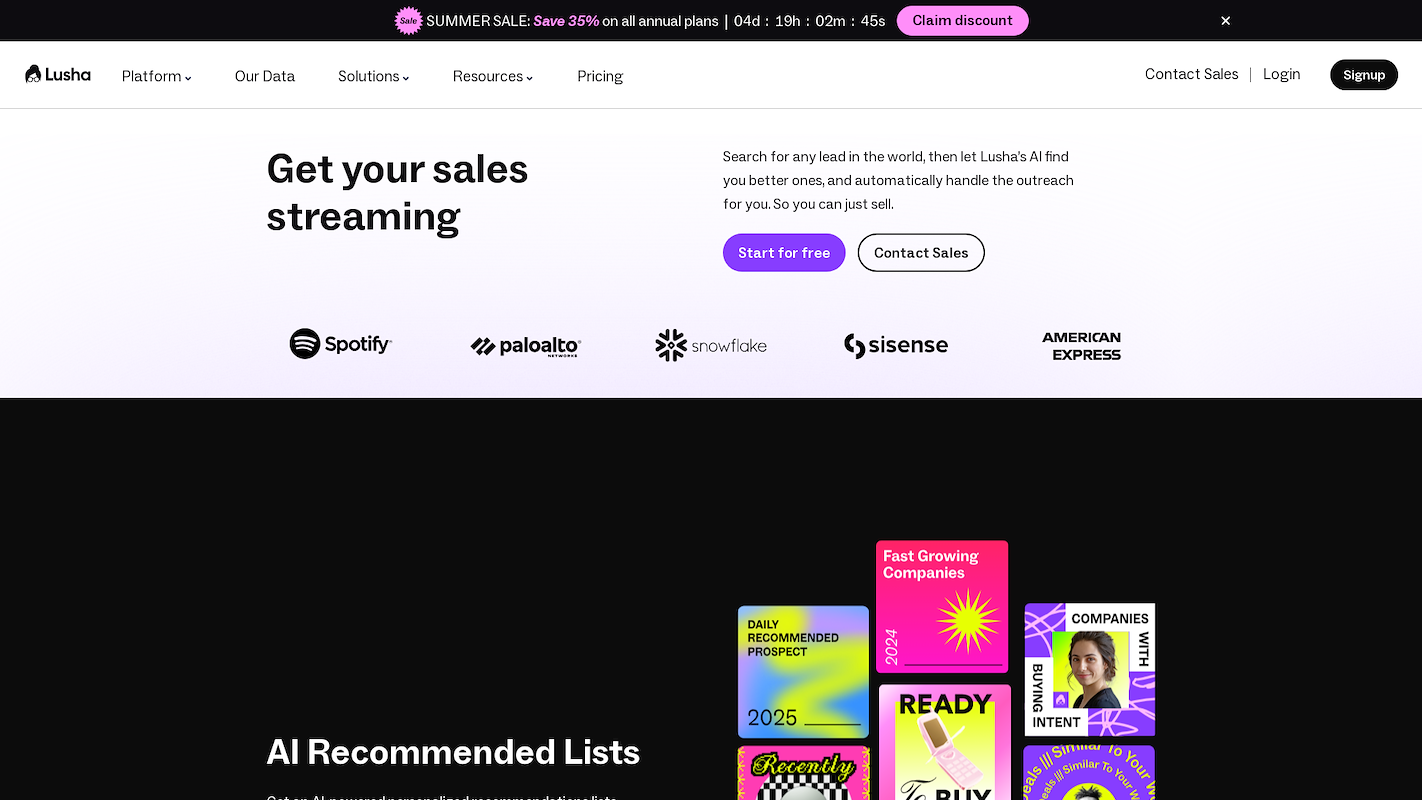
Lusha is a sales-intelligence platform that helps revenue teams find global B2B leads. It allows users to build prospect lists and automate multichannel outreach. The system can run personalized email sequences and integrates with popular CRMs and sales tools, with an emphasis on data compliance.
Lusha's Main Features
- Creates live, auto-updating lead lists that add new prospects at user-defined intervals.
- Records and analyzes sales meetings to provide performance insights.
- Offers advanced search with filters for buyer intent and company funding rounds.
How Lusha Compares to Humanlinker
Average Review score: 4.3/5 stars based on 1,516 G2 reviews.
- Lusha provides a free plan for a single user, which allows teams to test its core features without a financial commitment, unlike Humanlinker's credit-based system that requires a paid subscription.
- It uses AI Prospect Playlists to automatically create and update lead lists, which saves time on manual prospecting compared to Humanlinker's focus on individual prospect analysis.
- The platform excels at providing direct phone numbers and verified emails through its Chrome extension, offering a quicker way to get contact details than Humanlinker's personality analysis approach.
- Its search function includes advanced filters for buyer intent and company funding, allowing for more targeted prospecting than Humanlinker's behavior-focused analysis.
Lusha's Limitations vs. Humanlinker
- Lusha does not provide the deep personality analysis that Humanlinker offers. As a result, users may need to do extra research to tailor their message tone for each prospect.
- The tool offers less direct support for writing the outreach message itself. Humanlinker, by comparison, generates personalized text suggestions to help with copy.
- Some users note that Lusha's AI focuses on building prospect lists. This is different from Humanlinker's AI, which analyzes individuals to help craft personalized communication.
Pricing and Cost-Effectiveness
Lusha offers a free plan and its paid tiers start at $36 per user per month, making it more accessible than Humanlinker, whose paid plans begin at $75 per month. While Lusha provides a lower entry cost for data enrichment, Humanlinker's pricing reflects its focus on advanced AI personalization. For detailed pricing, visit Lusha's official website.
4) Cognism
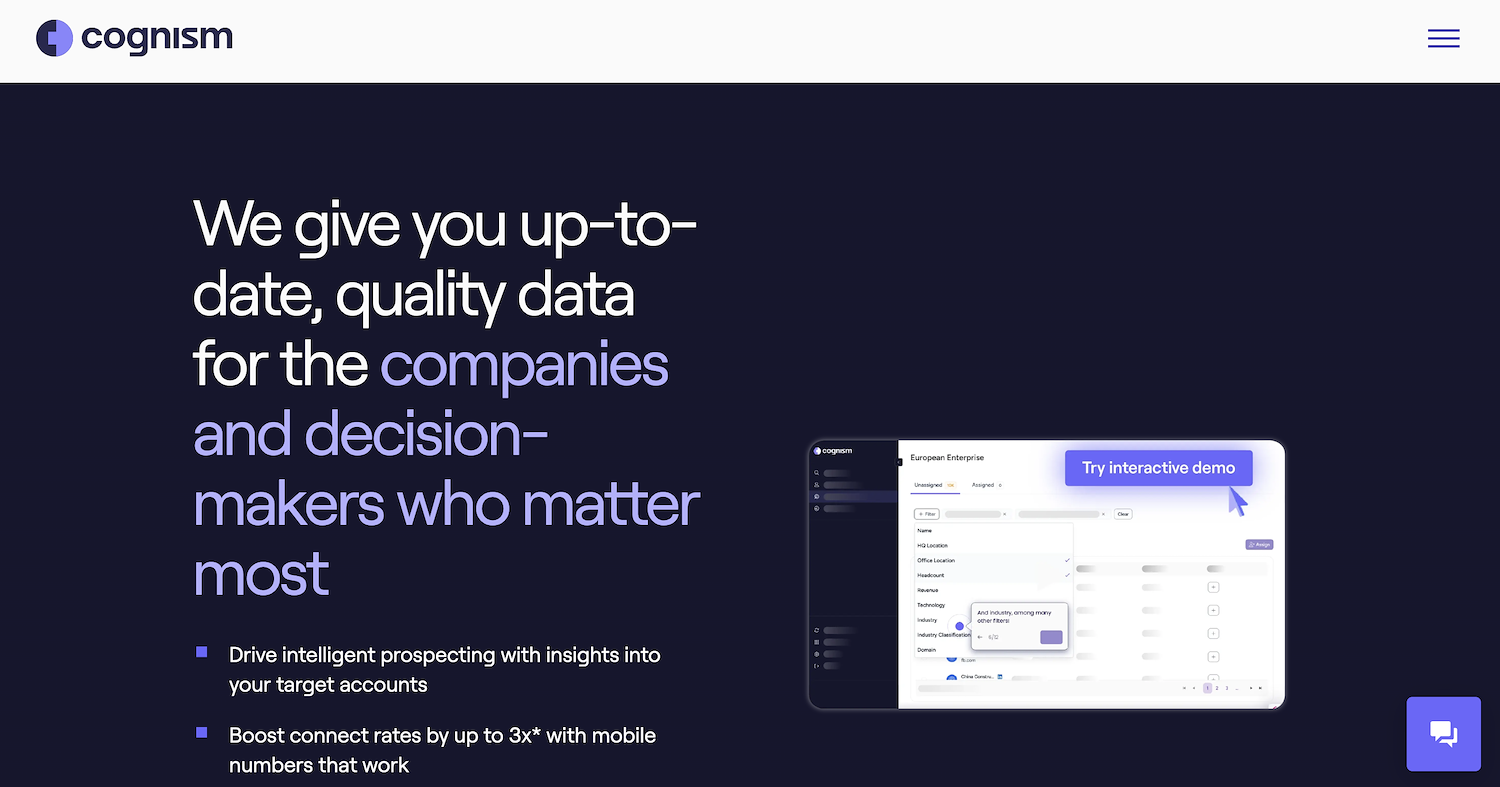
Cognism is a sales intelligence platform that provides verified B2B contact data. Sales teams use it to find prospects and execute email outreach campaigns. The service focuses on data compliance and accuracy to help users build targeted lists and connect with relevant contacts.
Cognism's Main Features
- Provides phone-verified, human-checked mobile numbers, known as Diamond Data®, to improve connect rates.
- Offers extensive coverage of mobile numbers and email addresses for contacts in the UK and EMEA regions.
- Surfaces buying signals from hiring trends, funding rounds, and technographic changes for timely outreach.
- Maintains a database of VP-level and above decision-makers, screened against Do-Not-Call lists for compliant outreach.
How Cognism Compares to Humanlinker
Average Review score: 4.6/5 stars based on 1,033 G2 reviews.
- Cognism provides phone-verified mobile numbers, especially for EMEA contacts. This gives sales teams a direct line for outreach, whereas Humanlinker's AI analyzes personality for message creation.
- The platform surfaces buyer intent signals from company changes like new hires or funding. This helps teams find timely opportunities, a different strategy from Humanlinker's behavioral analysis for outreach.
- It maintains a database screened against global Do-Not-Call lists. This focus on compliance offers a safeguard for outreach that is distinct from Humanlinker's core function of message personalization.
- This tool enriches CRM data to ensure contact information stays current. In contrast, Humanlinker uses its AI to analyze prospect personalities rather than to clean and update contact lists.
Cognism's Limitations vs. Humanlinker
Cognism does not offer AI-powered suggestions for outreach messages. This is different from Humanlinker, which analyzes a prospect's personality to generate personalized text and help users find the right tone.
The platform's AI is designed to surface buying signals like funding rounds or new hires. It does not analyze individual behavior for communication style recommendations, which is a core feature of Humanlinker.
Some users may find that the tool's emphasis is on data accuracy rather than deep personalization. As a result, sales teams might need to do extra manual research to understand a prospect's communication preferences, unlike with Humanlinker's automated analysis.
Pricing and Cost-Effectiveness
Cognism does not list public pricing and requires a custom quote, which is typical for platforms targeting enterprise clients. In contrast, Humanlinker's plans start at $75 per month. For accurate cost information, we recommend visiting Cognism's official website.
5) Clearbit
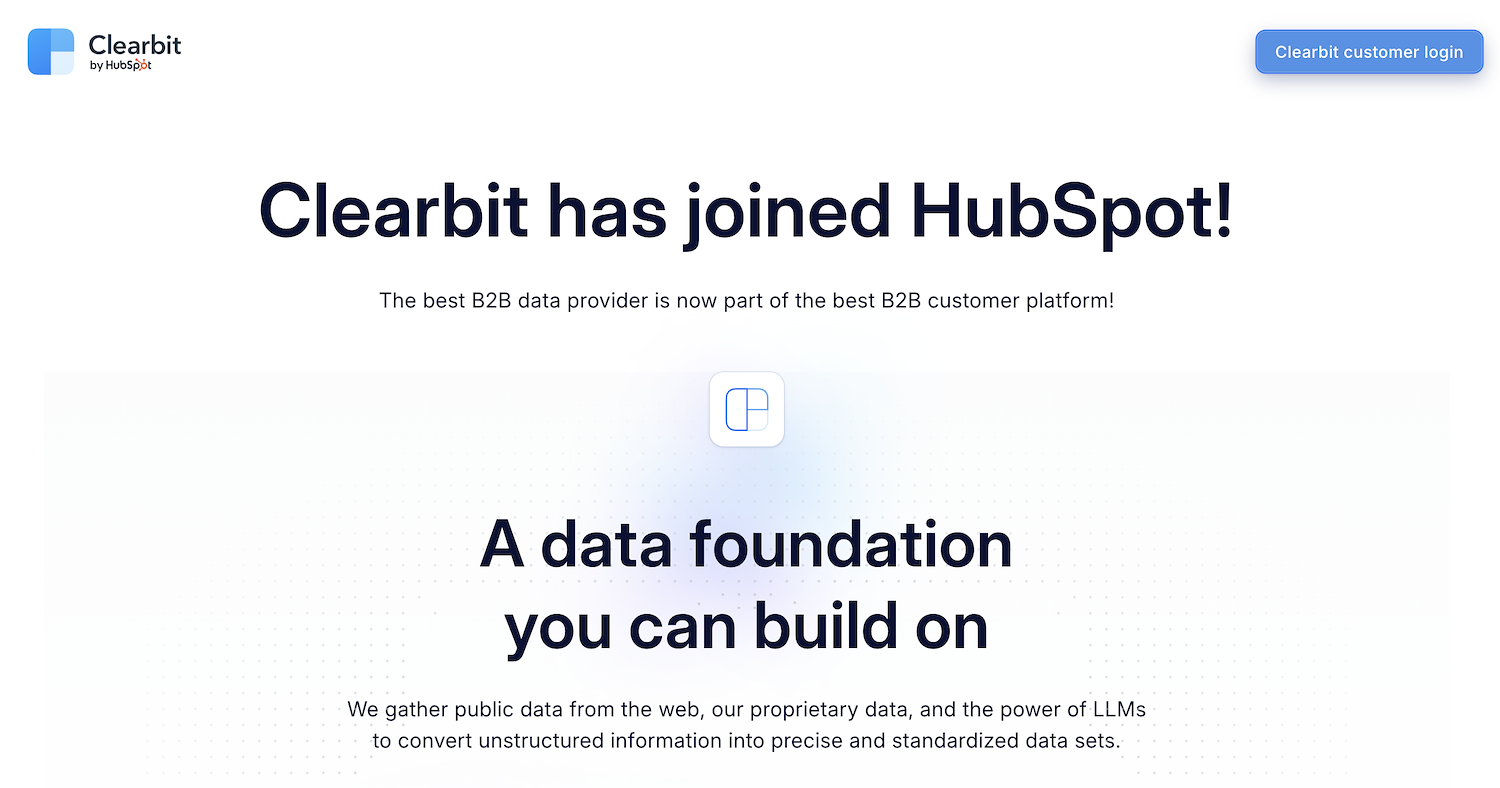
Clearbit is a data activation platform that enriches business contacts with company and role-specific details. Sales teams use this data to build targeted prospect lists and personalize email outreach. The platform also identifies anonymous companies on a website, which creates new opportunities for sales teams.
Clearbit's Main Features
- Enriches lead, contact, and account records with firmographic and demographic details.
- De-anonymizes website traffic to identify visiting companies that match an ideal customer profile.
- Provides data for real-time lead scoring and routing using industry classifications and corporate hierarchy mapping.
- Shortens web forms dynamically through automatic field enrichment to help increase conversion rates.
How Clearbit Compares to Humanlinker
Average Review score: 4.4/5 stars based on 626 G2 reviews.
- Clearbit enriches records with over 100 data points, like company size and technology stack. This offers a broader data set for segmentation than Humanlinker's personality-focused analysis.
- It identifies anonymous companies that visit your website, creating new lead sources. Humanlinker, in contrast, focuses on personalizing outreach to already identified prospects.
- The platform uses firmographic data for real-time lead scoring and routing. This automates lead prioritization, while Humanlinker's AI helps craft the outreach message itself.
- Its ability to shorten web forms by auto-filling fields helps increase website conversion rates. This is a marketing automation feature that Humanlinker does not provide.
Clearbit's Limitations vs. Humanlinker
- Clearbit does not generate personalized message suggestions. Unlike Humanlinker, which uses AI to help write outreach copy, this tool requires sales reps to craft their messages manually based on the data provided.
- The platform focuses on company and role data, not individual personality traits. This is different from Humanlinker, which analyzes a prospect's communication style to help users find the right tone for their outreach.
- Its AI is built to enrich data and identify anonymous website visitors. Some users may find it offers less direct support for the writing process compared to Humanlinker's AI, which is designed to craft personalized communication.
Pricing and Cost-Effectiveness
Clearbit requires a custom quote and does not publish its pricing, which is common for enterprise data solutions. In contrast, Humanlinker provides transparent pricing tiers starting at $75 per month. For specific cost details, we recommend visiting Clearbit's official website.
Consider 11x for Sales Automation
If your team seeks to automate sales tasks with digital workers, 11x is a platform to explore. It uses specialized agents to manage outreach and research, which can support your existing sales force.
For leaders who want to delegate repetitive work, 11x presents a different model. Evaluate how autonomous agents might fit your process and help you reach your sales objectives.
At 11x, our AI agents manage your sales playbook. Alice finds accounts, enriches data, and handles outreach, while Julian qualifies prospects and schedules meetings. We unify data enrichment, outreach, and email warmup in one platform, removing the need for extra tools.
Book a demo to see our platform in action.
6) LinkedIn Sales Navigator
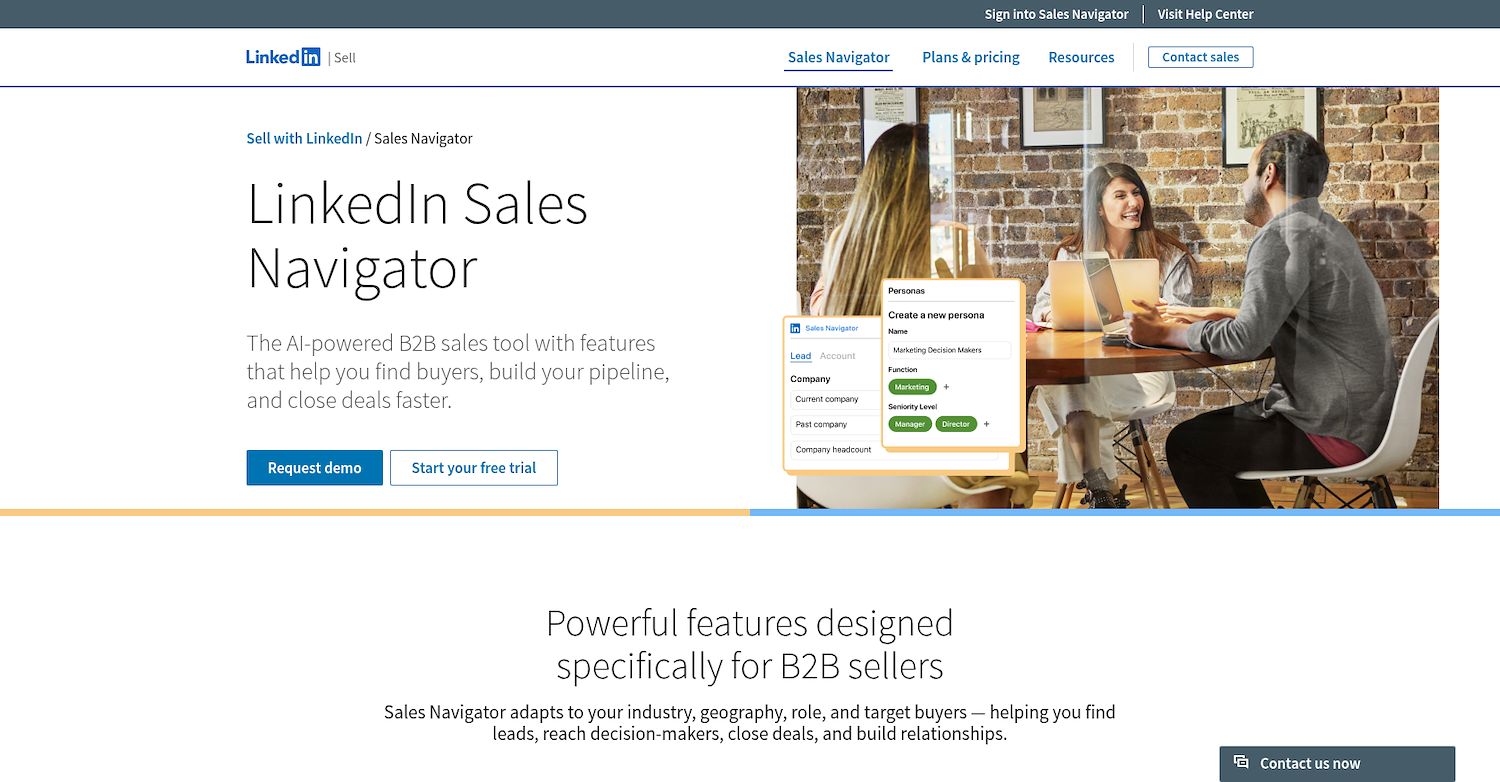
LinkedIn Sales Navigator helps sales teams find and connect with buyers on the LinkedIn platform. It offers advanced search functions and lead recommendations to identify relevant prospects. Users can also track company updates and job changes to inform their outreach strategy.
The platform supports direct communication with prospects through its InMail message feature. This allows for personalized contact within the LinkedIn ecosystem.
LinkedIn Sales Navigator's Main Features
- Offers advanced search filters and lead recommendations to find prospects within the LinkedIn network.
- Tracks company updates and job changes to provide timely reasons for outreach.
- Allows direct communication with prospects through its InMail messaging feature.
How LinkedIn Sales Navigator Compares to Humanlinker
Average Review score: 4.3/5 stars based on 1,990 G2 reviews.
- LinkedIn Sales Navigator provides access to LinkedIn's network of over 860 million members, offering a larger prospect pool than Humanlinker's more targeted analysis approach.
- Its advanced search filters help users find specific leads based on job titles or company size. This differs from Humanlinker's AI, which analyzes personality for message crafting.
- The platform alerts users to job changes and company news. This gives timely reasons to contact a prospect, a different approach from Humanlinker's focus on communication style.
- Users can send InMail messages directly on LinkedIn. This provides a native channel for outreach, while Humanlinker creates personalized text for external platforms like email.
Sales Navigator's Limitations vs. Humanlinker
- LinkedIn Sales Navigator lacks AI-powered personalization for message writing. It does not have a feature similar to Humanlinker's AI, which analyzes a prospect's personality to generate tailored text suggestions.
- The tool's insights are based on professional activity, such as job changes. It does not provide the deep behavioral analysis that Humanlinker offers to help users match a prospect's communication style.
- Its core function is prospecting within the LinkedIn network. As a result, some users may find it offers less support for crafting the actual outreach message compared to Humanlinker, which is a specialized personalization tool.
Pricing and Cost-Effectiveness
LinkedIn Sales Navigator does not publish its pricing, while Humanlinker's plans start at $75 per month. For a detailed quote from LinkedIn, we recommend visiting the official Sales Navigator website.
7) Salesloft
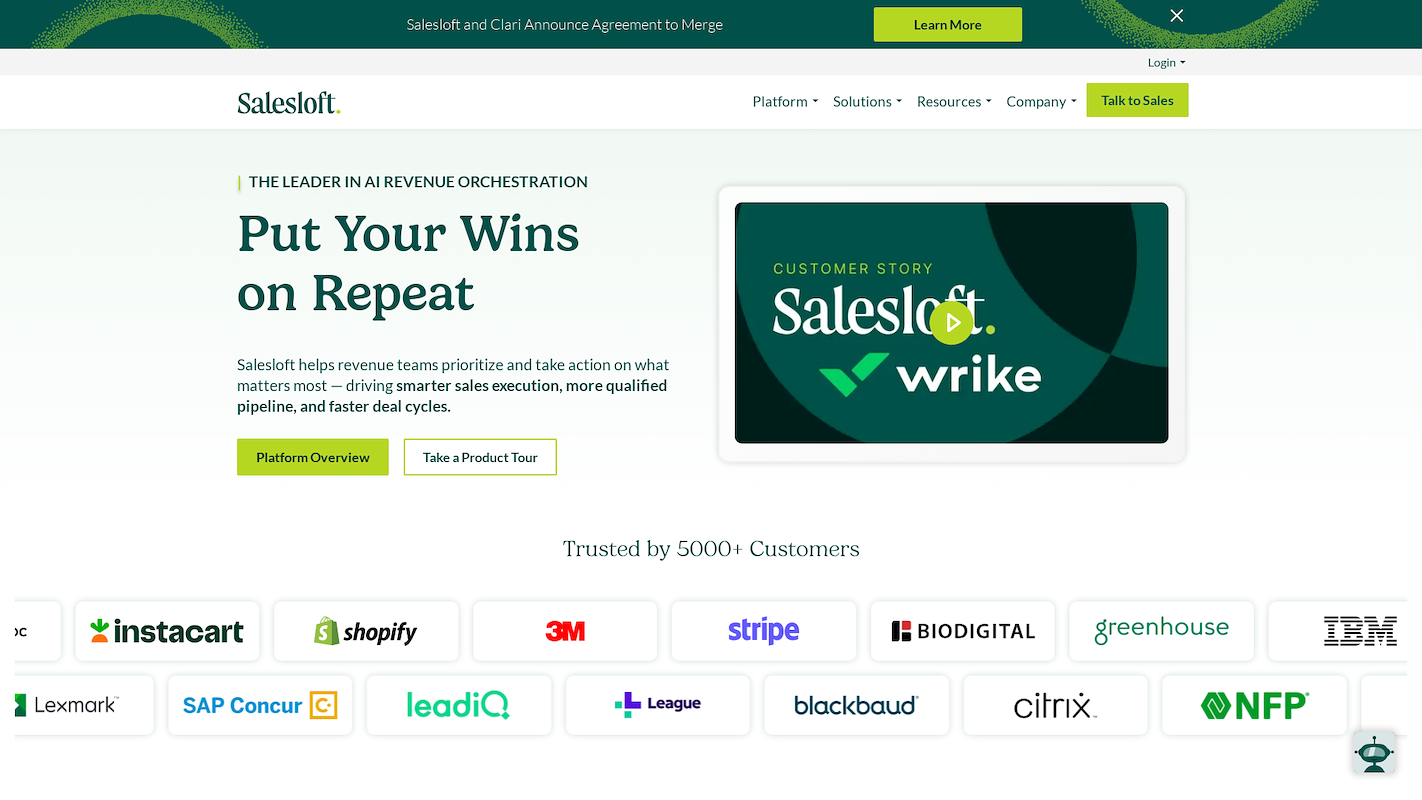
Salesloft is a sales engagement platform that helps revenue teams execute their sales plays. It provides tools to manage the full sales cycle, from initial contact to close. For email outreach, the platform allows users to build and run multi-step cadences.
These sequences combine emails, calls, and other actions to connect with prospects. The system also offers analytics to track engagement and performance.
Salesloft's Main Features
- Manages the full sales cycle with automated workflows for pipeline building, lead nurturing, and renewals.
- Uses an AI engine, Rhythm, to prioritize and recommend the next-best actions for sellers to take.
- Analyzes recorded calls to provide buyer and seller insights for coaching and performance improvement.
- Combines real-time deal data, AI, and seller input for more accurate sales forecasting.
How Salesloft Compares to Humanlinker
Average Review score: 4.5/5 stars based on 4,145 G2 reviews.
- Salesloft manages the entire sales cycle, from initial contact to renewal, which is a broader scope than Humanlinker's focus on personalizing outreach.
- Its AI engine, Rhythm, prioritizes a seller's next-best actions. This differs from Humanlinker's AI, which analyzes personality to help craft messages.
- The platform provides conversation intelligence by analyzing recorded calls for coaching insights, a feature not found in Humanlinker.
- It includes sales forecasting tools that use AI and deal data to predict revenue, offering a function outside of Humanlinker's capabilities.
Salesloft's Limitations vs. Humanlinker
- Salesloft does not offer AI-powered suggestions for outreach messages. Humanlinker, in contrast, analyzes a prospect's personality to generate personalized text and help users find the right tone.
- The platform's AI is designed to prioritize a seller's next actions. It does not analyze individual behavior for communication style recommendations, which is a core feature of Humanlinker.
- Some users may find its emphasis is on workflow automation rather than deep personalization. As a result, sales teams might need to do extra manual research to understand a prospect's communication preferences, unlike with Humanlinker's automated analysis.
Pricing and Cost-Effectiveness
Salesloft requires a custom quote, a common practice for enterprise-focused platforms. In contrast, Humanlinker provides transparent pricing starting at $75 per month. For accurate cost details, we recommend visiting the Salesloft's official website.
8) Outreach
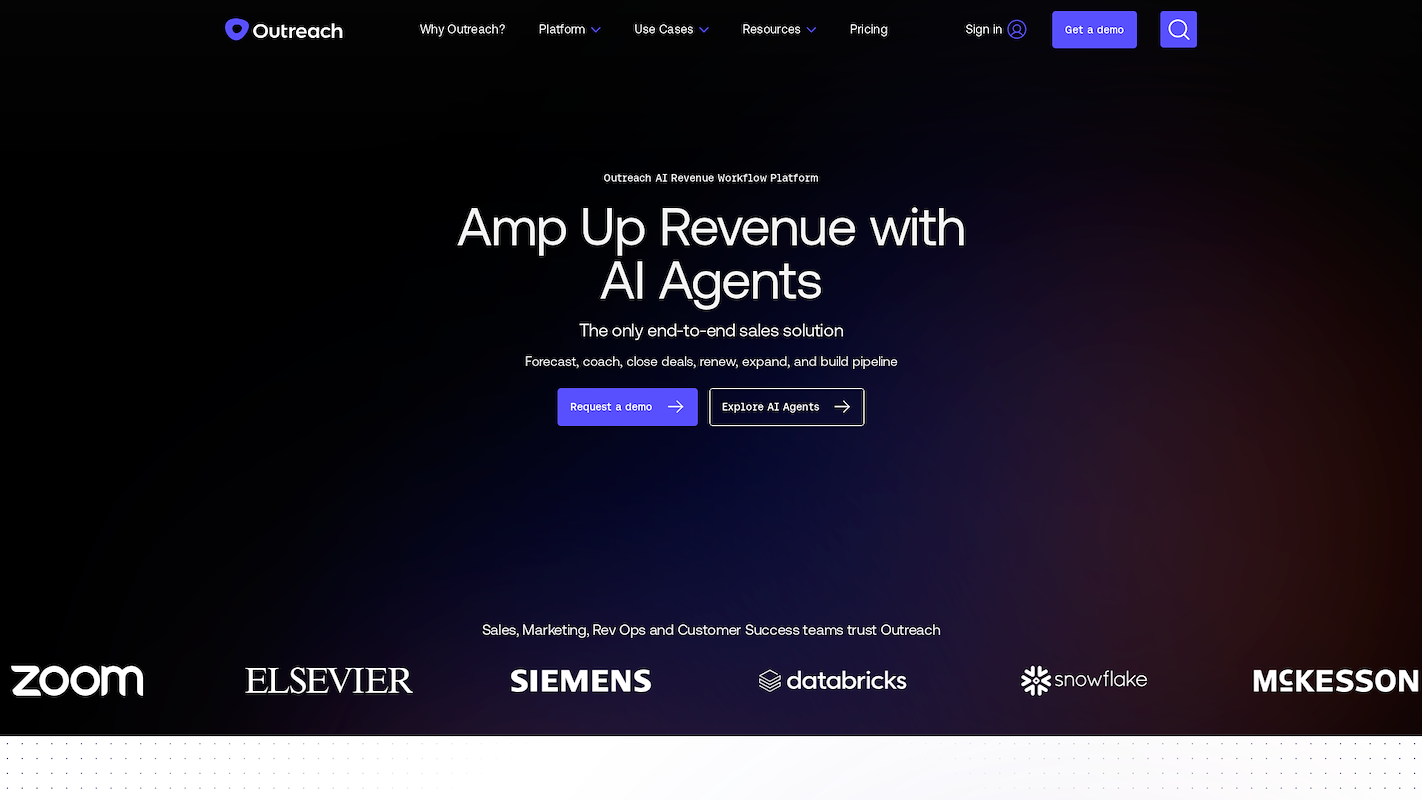
Outreach is a sales execution platform for revenue teams. It helps manage and automate the sales process through structured communication workflows. Teams use it to create multi-channel sequences, which often include a series of emails to engage prospects.
The system provides analytics on sales activities. This data shows how prospects interact with the outreach efforts and helps teams refine their strategy.
Outreach's Main Features
- Manages communication through automated, multi-channel sequences.
- Provides analytics on sales activities, including email open rates and link clicks.
- Includes a click-to-call function for placing outbound calls from the platform.
How Outreach Compares to Humanlinker
Average Review score: 4.3/5 stars based on 3,479 G2 reviews.
- Outreach automates multi-channel communication through sequences that include emails and calls. This differs from Humanlinker, which focuses on generating personalized text for messages rather than managing the entire workflow.
- The platform includes deal management and forecasting tools to help manage the full revenue cycle. Humanlinker, in comparison, provides analysis for the initial outreach stage but does not cover deal progression.
- It offers a click-to-call function for direct outbound calling from the platform. This provides a direct action tool, whereas Humanlinker offers insights to prepare for calls but does not include a dialer.
- This tool provides revenue intelligence features that analyze the entire sales process for strategic insights. This is different from Humanlinker's AI, which analyzes individual personalities to assist with message crafting.
Outreach's Limitations vs. Humanlinker
- Outreach does not generate personalized text suggestions based on a prospect's personality. Users must write their own messages, unlike with Humanlinker, which provides AI-generated copy to match a prospect's communication style.
- The tool's AI is built to manage sales workflows and forecast deals. It does not offer the deep behavioral analysis that Humanlinker provides to help users adapt their tone for each individual prospect.
- As a platform for the entire sales process, its features for individual personalization are less specialized. Humanlinker, by contrast, concentrates solely on analyzing prospects to help create hyper-personalized outreach.
Pricing and Cost-Effectiveness
Outreach requires a custom quote, a common practice for enterprise-focused platforms. In contrast, Humanlinker provides transparent pricing with plans starting at $75 per month.
For accurate cost details, we recommend visiting Outreach's official website.
9) Groove
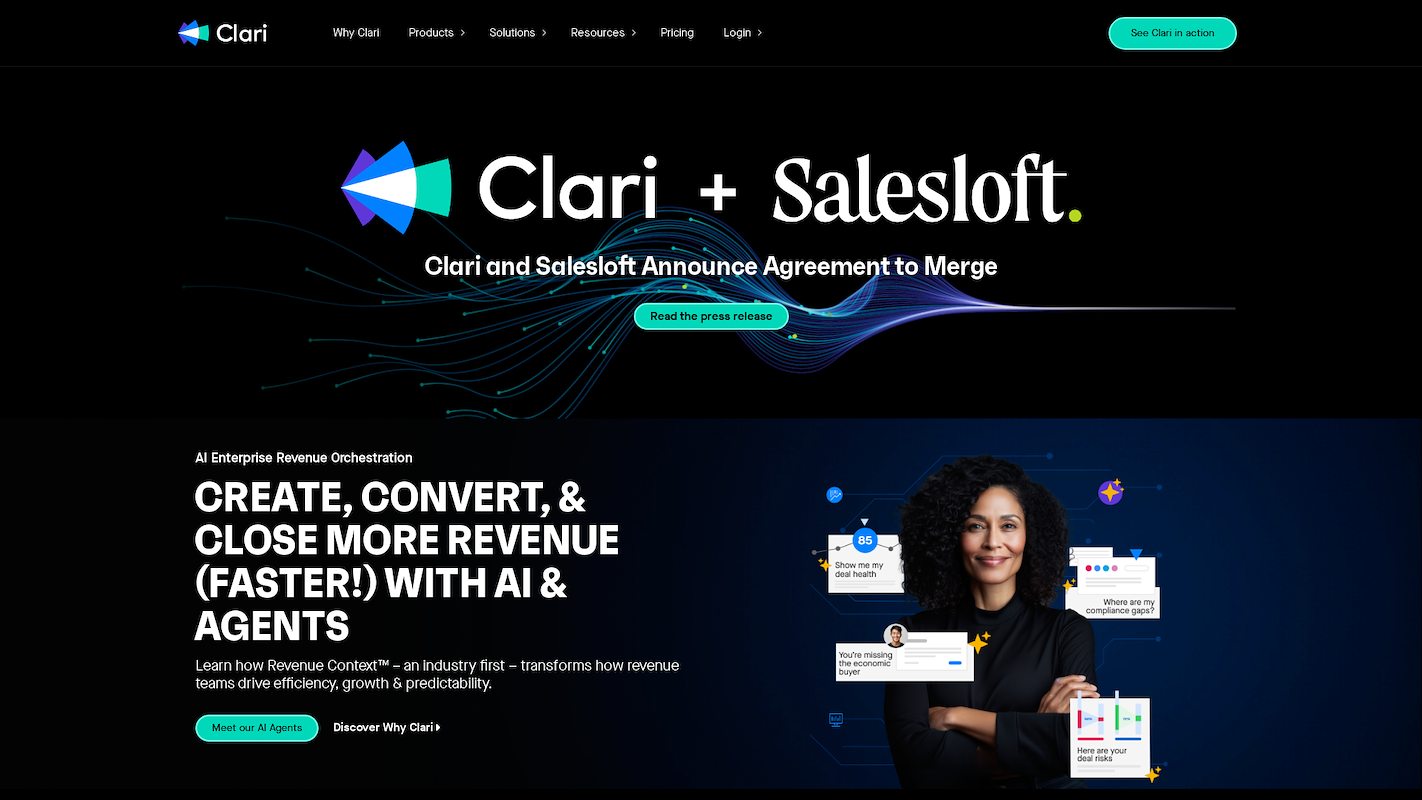
Groove is a sales engagement platform for teams that use Salesforce. It helps sellers manage communication and automate outreach. For email, users can create multi-channel campaigns that combine messages with other sales activities.
The platform logs all activities back to Salesforce. This gives teams a clear view of engagement and helps them track performance without extra data entry.
Groove's Main Features
- Provides ticket and case management for customer support inquiries.
- Converts incoming emails into support tickets with an email-to-case function.
- Includes tools for internal discussion and notes on support tickets.
- Allows for user, role, and access management to define team permissions.
How Groove Compares to Humanlinker
Average Review score: 4.6/5 stars based on 193 G2 reviews.
- Groove offers a ticket and case management system to handle customer support inquiries. Humanlinker, in contrast, does not have support features and focuses on personalizing initial sales outreach.
- The platform includes a shared inbox and an email-to-case function to organize customer communication. This is a support-centric feature, while Humanlinker's AI analyzes prospect data for sales message creation.
- This tool allows teams to add internal notes and have discussions directly on support tickets. This helps with team collaboration on customer issues, a function not present in Humanlinker, which is designed for individual sales rep personalization.
- It allows companies to build a knowledge base for customer self-service. This feature reduces ticket volume, whereas Humanlinker is built to generate personalized sales messages to start conversations.
Groove's Limitations vs. Humanlinker
- Groove does not analyze a prospect's personality to suggest a communication style. Sales teams may need to do manual research to find the right tone, a step that Humanlinker automates with its AI.
- The platform's features focus on customer support tasks. It offers no direct help to write the initial sales message, which is Humanlinker's primary function.
- As a help desk tool, it lacks sales intelligence features. This is different from Humanlinker, which provides behavioral insights specifically for sales outreach.
Pricing and Cost-Effectiveness
Groove's paid plans start at $15 per user per month, making it more affordable than Humanlinker, whose plans begin at $75 per month. This lower entry cost makes Groove accessible for teams needing a help desk, while Humanlinker's pricing reflects its AI personalization features for sales.
10) Lemlist
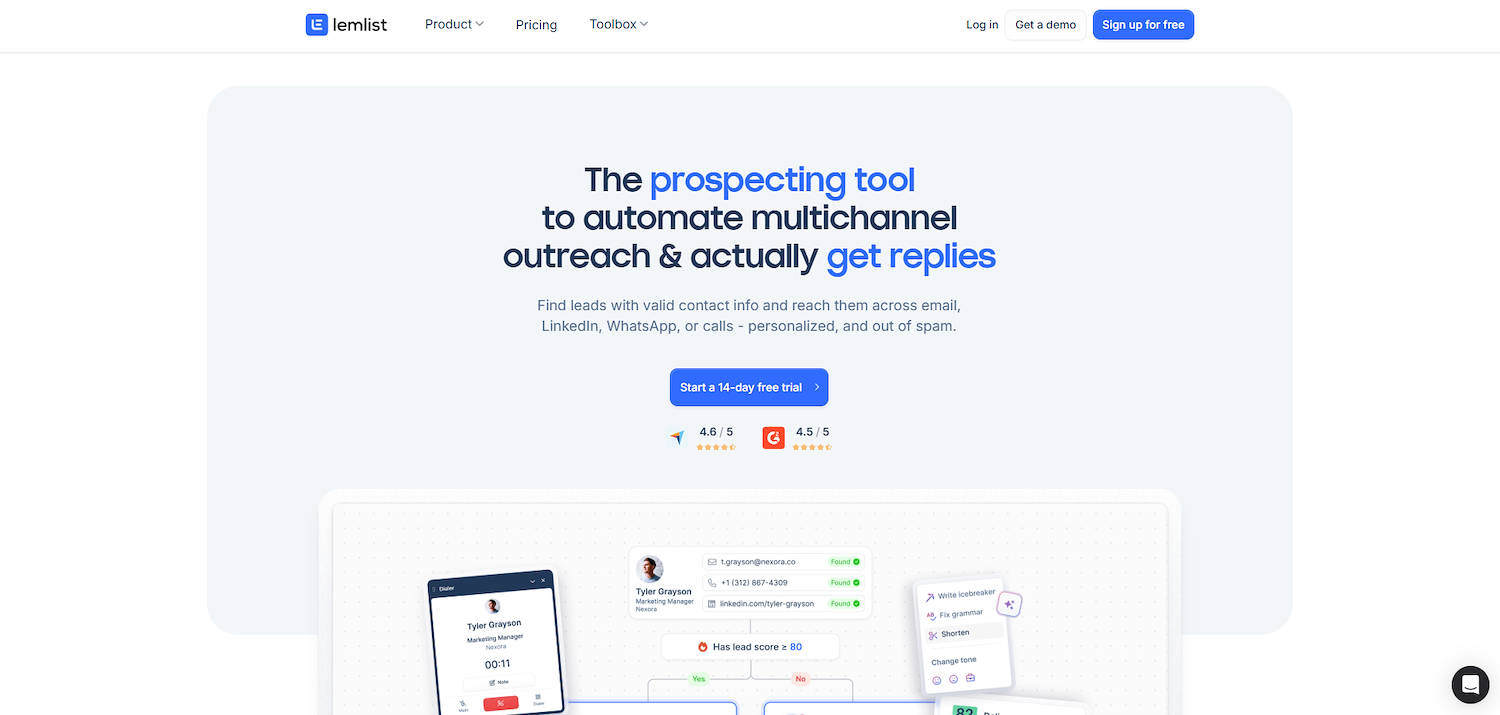
Lemlist is a platform for sales teams to manage email outreach. It allows users to create personalized campaigns and automate communication sequences. The tool also offers features to track campaign performance and prospect engagement.
Lemlist's Main Features
- Automates multi-channel outreach sequences that combine email, LinkedIn, and calls.
- Personalizes messages with dynamic text, images, and videos.
- Includes email deliverability tools to monitor and optimize sending practices.
- Provides A/B testing to help users refine their outreach strategy based on campaign data.
How Lemlist Compares to Humanlinker
Average Review score: 4.4/5 stars based on 276 G2 reviews.
- Lemlist automates multi-channel sequences across email, LinkedIn, and calls. This differs from Humanlinker, which focuses on generating personalized text for individual messages rather than managing the entire outreach workflow.
- The platform personalizes messages with dynamic images and videos. This offers a different type of customization compared to Humanlinker's AI, which analyzes personality to suggest a communication style.
- It includes email deliverability tools to help ensure messages reach the inbox. This is a technical feature for campaign execution that is not a primary focus of Humanlinker's personalization engine.
- Lemlist provides A/B testing to optimize campaign performance based on data. This allows teams to refine their strategy, whereas Humanlinker's main function is to assist with crafting the initial outreach message.
Lemlist's Limitations vs. Humanlinker
- Lemlist does not provide AI-powered personality analysis. This is different from Humanlinker, which analyzes a prospect's communication style to help users find the right tone for their outreach.
- The tool offers less direct support for writing the outreach message itself. Humanlinker, by comparison, generates personalized text suggestions to help with the copy.
- Its AI is built to automate workflows and optimize campaigns. Some users may find it offers less support for crafting hyper-personalized communication compared to Humanlinker's focus on individual analysis.
Pricing and Cost-Effectiveness
Lemlist offers a free plan and a paid tier at $55 per year for email-only features, making it more accessible for basic use. For multichannel outreach, its plan is $79 per month, comparable to Humanlinker's starting price of $75 per month. For detailed pricing, visit Lemlist's official website.
Which One Should You Go With?
Choosing a Humanlinker alternative involves many variables. This guide shared several options to help you decide.
If your goal is sales automation, 11x offers a different approach. The platform uses AI agents to manage prospecting, outreach, and lead qualification. This unifies multiple functions and helps your team delegate repetitive work.


